I had been dreaming a trip to Copenhagen for so many years. I don’t know exactly why, but even as a child the sound of its name fascinated me – it may be because of my weakness for the Nordic languages.
I saw Copenhagen as a very relaxed city, its inhabitants always smiling and I was fascinated by the pictures of the colorful houses in Nyhavn. The expectations were quite high and Copenhagen met them with flying colours.
2017 was to be the year of Copenhagen
The call of the Danish capital was very strong and I was always there looking for low-cost flights to Copenhagen. I had found a very good offer for the May Day weekend, but because of unfavorable flight times giving me just one entire day in Copenhagen, I gave up the idea and chose Lyon as destination.
Copenhagen had remained in my thoughts even after that wonderful journey in France and in my heart I hoped to go there as soon as possible. At the end of May, I found a fantastic offer for October (only € 34 for a return ticket) and with more than favorable schedules. I didn’t think twice about booking. I was destined to go to Copenhagen in 2017!
Copenhagen in three days: my itinerary
The itinerary I created for this three-day trip to Copenhagen was designed to tour the city and its surroundings as much as possible, possibly being less enclosed within the museum walls. Copenhagen has so many museums and if you are passionate about art, especially modern and contemporary, it is the city for you.
Here is the itinerary I followed:
- first day: arrival in Copenhagen and visit of the city center;
- second day: Hillerød Castle in the morning and Copenhagen in the afternoon;
- third day: Helsingør Castle and last walk in Copenhagen before returning to Italy
First day in Copenhagen
Alarm clock at 4:30 am. Although I had slept for just 4 hours, I was very happy for my upcoming trip to Copenhagen. The flight took off from Turin airport on time at 7:20 am. It was a very peaceful flight, but at the same time special for me, because for the first time in my life I saw dawn from up there and I will never forget those colours.
We landed in Copenhagen at 9:15 and a very cloudy sky welcomed us. As soon as we arrived at the airport, we went in search of the tourist office, where we bought the Copenhagen Card (click here to buy it).
Once this was done, we moved towards the city center. The Copenhagen airport is located 9 km from the center and is well connected with it. In fact, in just 15 minutes by subway or train you arrive in the center. We arrived at the Nørreport station, from where we then took the 5C bus to get to the apartment in the Nørrebro neighborhood we had booked on Airbnb. After going to the LIDL supermarket which was a 5 minute walk from the apartment and having lunch, we went out to explore the city.
Botanisk Have (Botanical Garden)
For convenience we started our tour of the center of Copenhagen from the Botanical Garden, because it was very close to the Nørreport bus stop. The entrance to the garden is free and I recommend a walk inside, even if for just a few minutes. Among the various flower beds you can see plants of all kinds; there is also a pond and this is the first photo I took in Copenhagen.

Botanical Garden Pond
Autumn can be an excellent time to take a stroll in this botanical garden, especially for lovers of foliage. The garden culminates with a greenhouse, in which palms and tropical plants grow.

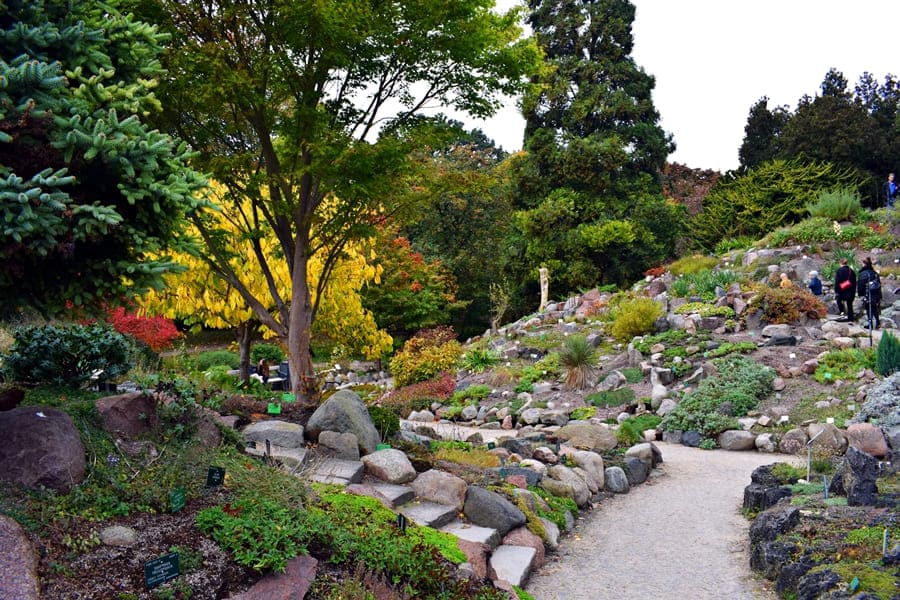


Copenhagen’s Botanical Garden
Rosenborg Slot (Rosenborg Castle)
Just a few minutes walk from the Botanical Garden, you’ll find Rosenborg Castle. It immediately catches your attention for its structure with cusps and turrets and for the colour of its facade made of red bricks. It was a royal residence and since the 19th century it houses the Museum of Danish Royal Collections, which exhibits valuable objects of the Danish monarchy, including royal crowns, the scepter, objects used during the coronation ceremony, the royal throne, etc. Unfortunately, in autumn and winter, the castle closes early and for this reason I couldn’t visit its interiors.
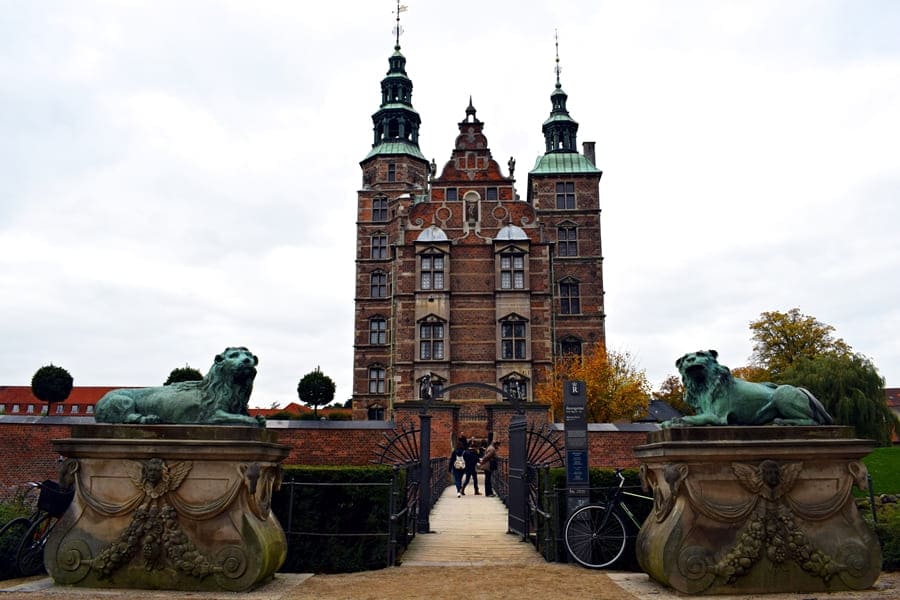



Rosenborg Castle
The gardens, on the other hand, are open to the public free of charge and are also widely used by the inhabitants of Copenhagen.



Gardens of Rosenborg Castle
Kastellet and St. Alban’s church
After walking through the gardens of the Rosenborg Slot and taking some pictures, we set off again towards Østerport. Our goal was to see the Little Mermaid before sunset. A shy sun had come out, but in any case there is not a very strong and bright sun in Denmark in the afternoon in October. From 3pm to 6pm, there was in fact a phase of almost twilight.
Before going to see the “Miss sitting on the rock”, we stopped in a former fort, which preserves part of the walls built in the 17th century to protect Copenhagen from the Swedes. This is Kastellet. Today it no longer has a defensive function, but it is a beautiful park with a fortified citadel, now home to the Danish Ministry of Defense. Inside there is a star-shaped moat, on which the willows and the buildings that surround it are perfectly reflected. Typical of Kastellet are the red terraced buildings with sloping roof and the windmill located on a small hill.

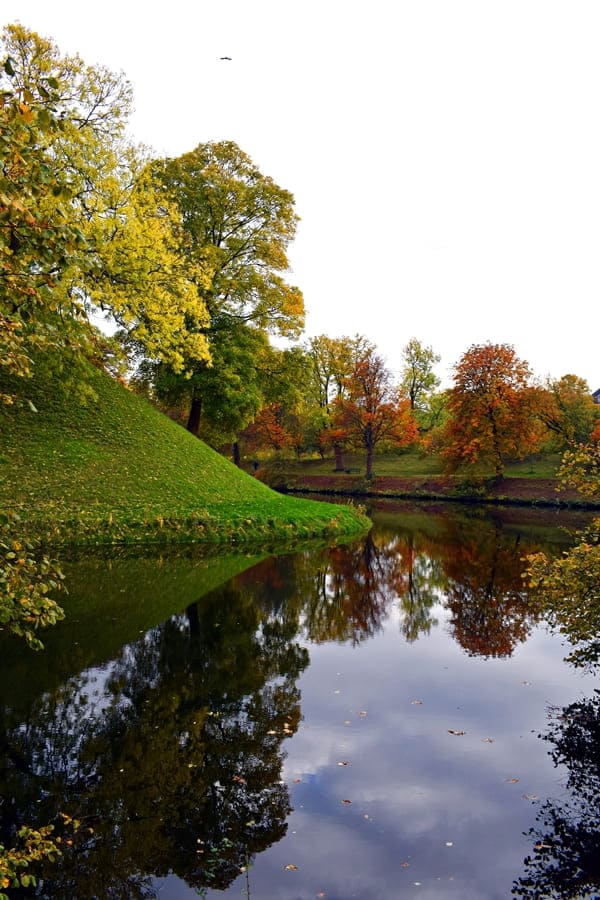



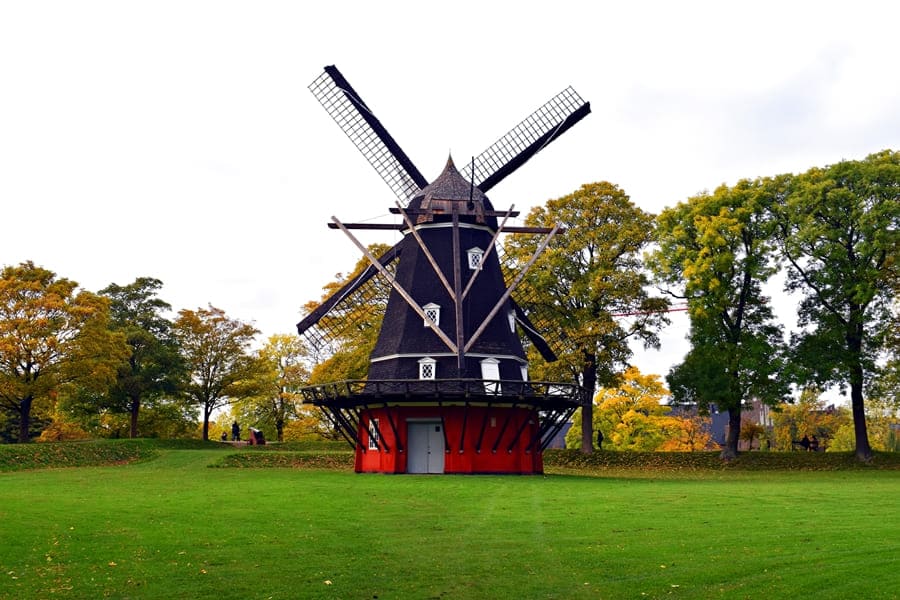

Kastellet
Leaving Kastellet and going towards the Langelinie pier, there is the Anglican church of St. Alban. Although it was built by a Danish architect, this church is characterzied by an English Victorian architectural style. It really seems for a moment to be catapulted to England.
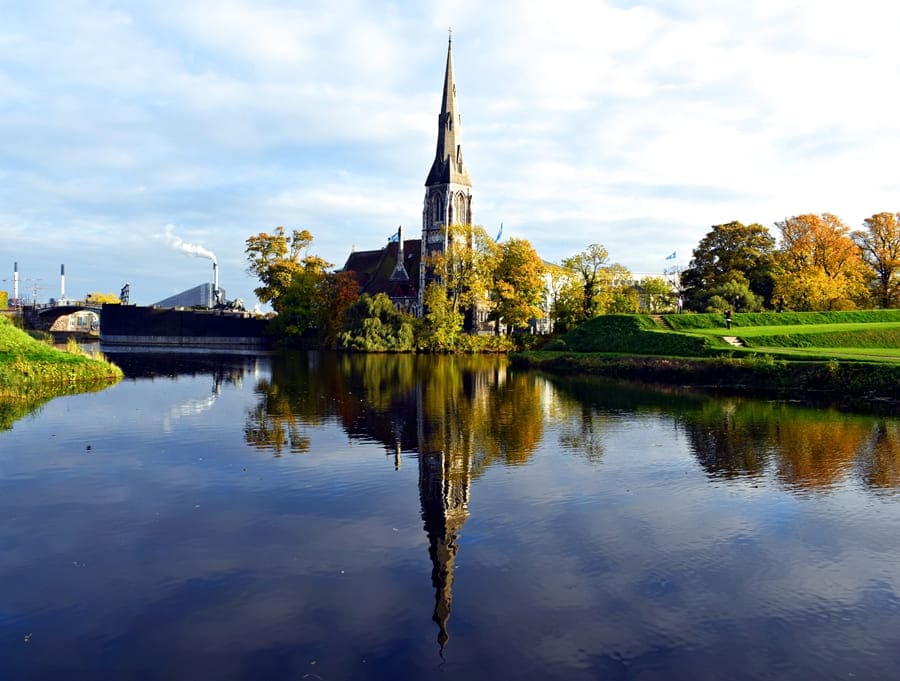

St. Alban’s church
Genfion Fountain
Very close to the church, there is Genfion Fountain, the most beautiful fountain in Copenhagen. It represents the birth of the island on which the city of Copenhagen is located, the Zealand (Sjælland in Danish). According to legend, in fact, Genfjun had asked the king of Sweden for a piece of land and the latter replied that he would have given her as much land as she could plow in one night. Genfjun turned her sons into oxen and managed to get Zealand.


Genfion Fountain
Den Lille Havfraue (the Little Mermaid)
Walking from the Genfion Fountain along the Langelinie pier, we arrived at the undisputed symbol of the city of Copenhagen, the Little Mermaid. You will notice that you are approaching it, because you will find a multitude of people standing there to photograph it and take selfies with it.

The Little Mermaid appears sitting on a rock, with a melancholy look towards the Øresund, waiting for the arrival of her beloved. The statue was commissioned in 1909 by brewer Carl Jacobsen, son of the founder of the Carlsberg brewery. He had been so fascinated by the fairy tale told by Hans Christian Andersen that he decided to make a gift to his city. The statue hasn’t had a happy life, since it has been victim of continuous acts of vandalism.

The Little Mermaid
Many people get disappointed when they see the Little Mermaid. Perhaps because they expect to find a larger statue, perhaps because the background of the statue is the port area of Copenhagen, so certainly not one of its most beautiful views. The fact is that that bronze statue attracts many people every day and makes them dream.
Nyboder
Leaving the Little Mermaid waiting for her beloved, we marched back to the center of Copenhagen. The next stop of our tour was Nyboder. It is a small neighborhood consisting of two-storey terraced houses with an ocher coloured facade and red roofs. These houses were built by King Christian IV to house the navy men and their families. If you have watched the movie “The Danish Girl“, you will surely recognize it – this is not the only location of the film I have seen.


Nyboder
Frederik’s Church
Continuing towards the center, we headed to the Marmorkirke (Marble Church) or Frederiks kirke (Frederik’s Church). The original plan foresaw a much more impressive church, which resembled in all respects St. Peter’s Basilica in Rome and St. Paul’s Cathedral in London. The similarity in the building structure is visible, although the project has been resized. However, the church has the largest dome in Scandinavia.



Marmorkirke
Amalienborg Palace
Not far from the Marmorkirke you’ll find the Amalienborg Palace, winter residence of the Danish royal family. In reality, it consists of 4 identical buildings giving onto a square with the equestrian statue of King Frederick V in the center of it. Every day, whether the Queen is in the Royal Palace or not, the Changing of the Guard takes place: the soldiers of the royal guard parade through the streets of central Copenhagen, starting from Rosenborg Castle to Amalienborg Royal Palace. In any case, at any time you go, you will find the guards who stake the square.

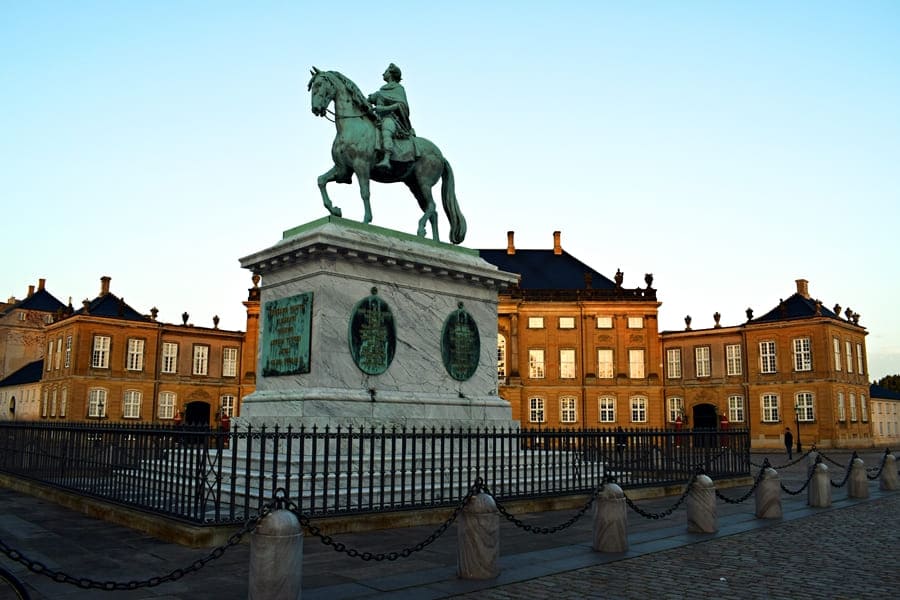
Amalienborg Palace
Nyhavn
A few minutes walk from Amalienborg, you’ll get to Nyhavn, one of the most famous and picturesque corners of Copenhagen. It is the old commercial port of the city, characterized by its colorful buildings. I think we spent about an hour in Nyhavn, until sunset, and it was one of the best moments of the trip.

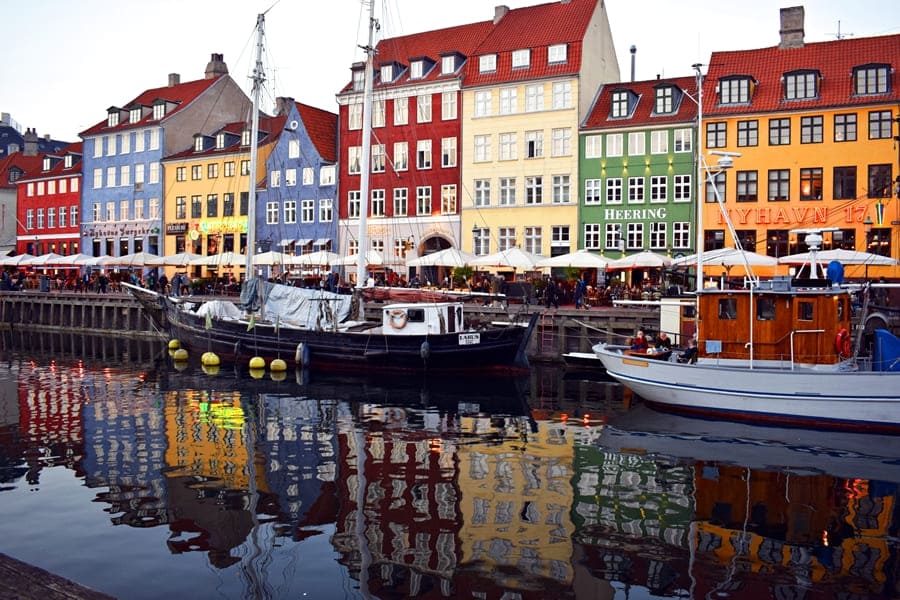

Nyhavn
Many of the buildings date back to the 17th century and have been refurbished, hosting today very nice restaurants and bars, especially at night. The illuminated port is really characteristic in the evening. Even Nyhavn was a location for the film “The Danish Girl”. Many famous people lived there in the past, including the writer Hans Christian Andersen for several years (at numbers 20,67 and 18).

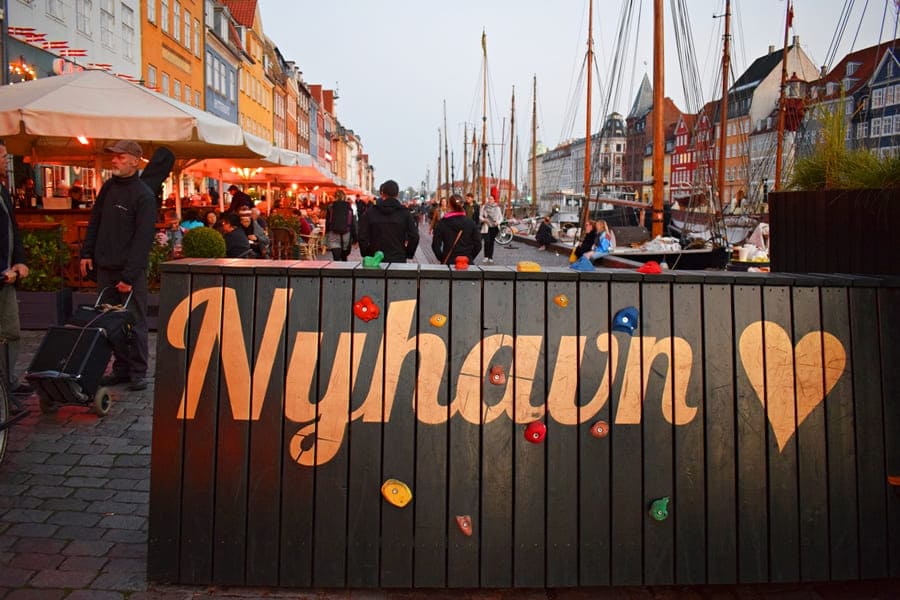

Other pics from Nyhavn
Strøget
It was dark after several hours of almost twilight. In the autumn in Copenhagen the sun doesn’t rise much in the sky because of the latitude. From Nyhavn, more precisely from Kongens Nytorv, we took the Strøget street, the longest pedestrian street in Europe. Over 2 kilometers long, it connects Rådhuspladsen (Town Hall Square) to Kongens Nytorv, one of Copenhagen’s main squares.
In reality it is not a single street, but it consists of four consecutive streets. This is the Copenhagen’s shopping street, with boutiques of international brands and shops of the major chains. Strøget‘s peculiarity is the fact that the classiest part with the most elegant buildings and the most exclusive boutiques is located in the part near Kongens Nytorv, while shops for those who can spend a little less (shops for everyone) are located on the other side, going towards Rådhuspladsen.

Strøget
Second day in Copenhagen
The second day in Copenhagen began with an alarm clock at 7:30 am. Just the time to have breakfast and get ready, shortly after 8 we were already around the city. It was peak hour and the streets were invaded by bicycles. There were also several cars, but the number of people who went to work/school by bike was really unbelievable. We also saw a holding hands couple cycling to work. There I started to understand the meaning of hygge, an untranslatable Danish term which expresses a sense of serenity and happiness that is experienced while savoring the pleasures of life surrounded by the affection of loved ones.
The first stop of the second day in Copenhagen was the central station, from where we took a train to Hillerød. In this pretty little village about forty kilometers away from Copenhagen, Frederiksborg Castle is located. According to many, it is the most beautiful castle in Denmark.
Back in Copenhagen at around 2pm, we went to the Torvehallerne, an indoor food market, where you can also eat. There we had lunch with fish & chips and tried the typical Smørrebrød with salmon, all accompanied by a craft beer on tap.

Smørrebrød
Rundetårn (Round Tower)
With full bellies, we resumed our tour of the center of Copenhagen. The first stop was the Rundetårn. It was erected in the mid-seventeenth century as an astronomical observatory and it presents inside with a spiral ramp leading up to the summit. At the top you can admire a 360-degree panorama over Copenhagen. The tower is still today the oldest astronomical observatory in Europe, in fact you can watch the stars from the telescope at the top.

Rundetårn
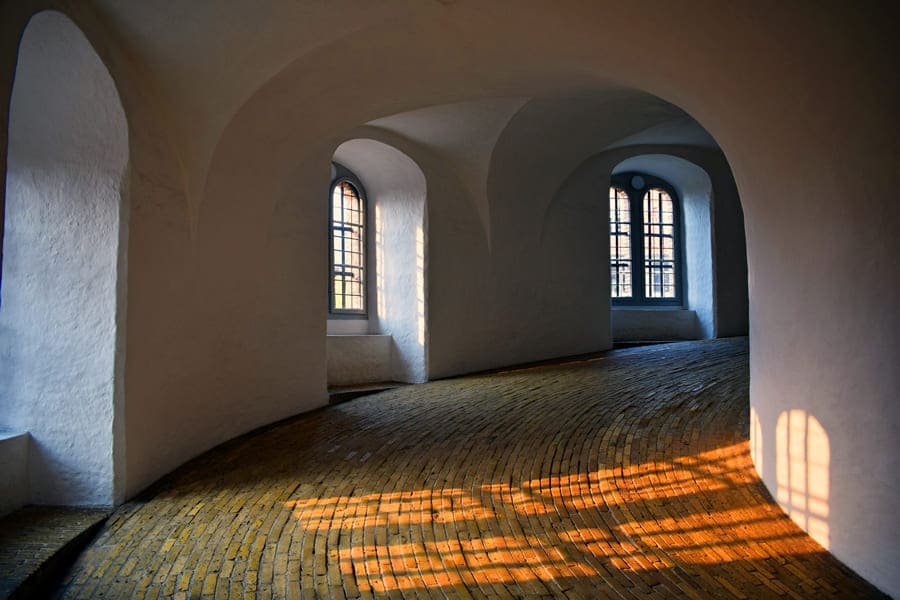
Spiral ramp inside the Rundetårn

View of Copenhagen from the Rundetårn
Copenhagen Canal Cruise
After seeing Copenhagen from above, time had come to explore it from another perspective, the one of its canals.There are two berths for Copenhagen canal cruises: the first is located at Nyhavn and the second at Gammel Strand, opposite Christiansborg Palace. If you have the Copenhagen Card, the canal cruise is free of charge, but be careful, only if you board from the Gammel Strand berth. Apart from this, if you embark from a pier rather than the other, the tour you will do is the same.

Christiansborg Palace

Børsen
We obviously started our cruise from Gammel Strand.From there, we saw Christiansborg Palace, the Børsen Palace (the Exchange) with its characteristic Dragon’s Spire, consisting of four dragon tails twisted together.The cruise then continued to Nyhavn, up to the Little Mermaid, passing in front of the Opera, the National Library, a copy of Michelangelo‘s David.All told by an audioguide. The tour of the canals lasted an hour and before returning to Gammel Strand, the boat took a ride through the canals of the Christianshavn district, where suddenly it seems to be in Amsterdam.It was a fortune that Christianshavn was included in the cruise itinerary, because otherwise I wouldn’t have had time to see this area of Copenhagen.

National Library
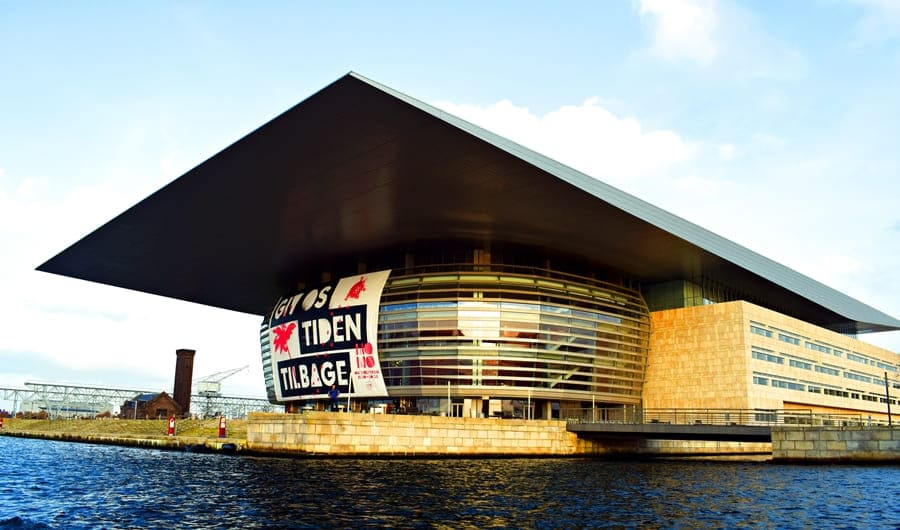
Opera House

Danish navy Holmen base

Copy of Michelangelo’s David

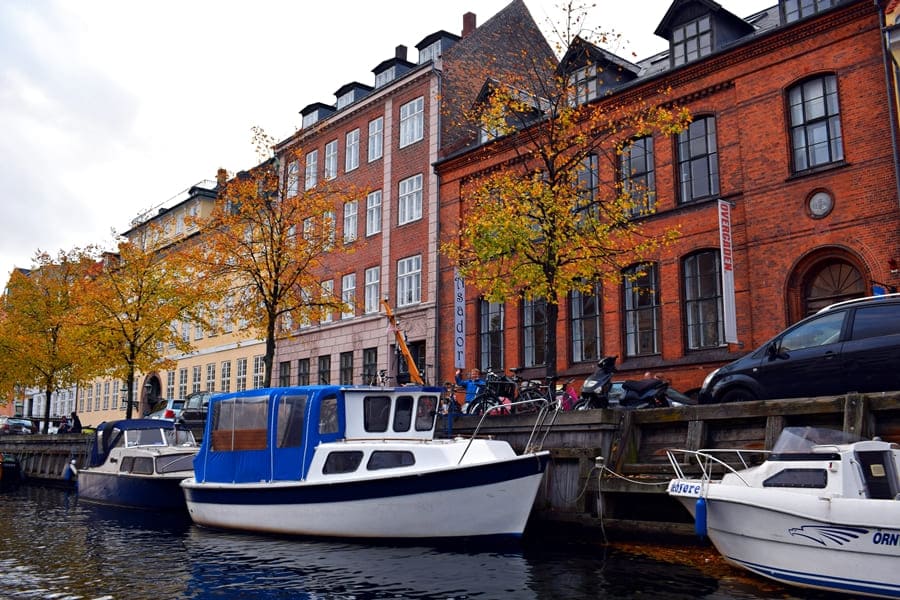
Christianshavn
Magstræde
Back on the mainland, we toured the streets of central Copenhagen. We also went on one of the oldest streets in Copenhagen: Magstræde. And even here I breathed a bit of hygge atmosphere. The bars of this street were lit by candles, creating a very relaxed and welcoming atmosphere.


Magstræde
Tivoli Gardens
When it got dark, we headed to one of the attractions that intrigued me the most: the Tivoli Gardens and its amusement park. The latter was inaugurated in 1843 and is the oldest theme amusement park in the world. The best times to visit it are undoubtedly Halloween and Christmas, when the park is decorated to the nth degree.

Statue of Andersen in front of the Tivoli Gardens
I was lucky to be in Copenhagen a few days after the opening of the Tivoli Gardens for the Halloween season and it was a great experience. For the first time in my life I breathed the real atmosphere of Halloween, as I had always seen it in American films. It was really a sight for sore eyes, with pumpkins everywhere, lanterns, skeletons, witches, etc.




Tivoli Gardens
It is also very nice the Chinese section, where the roller coaster are located. The Tivoli Gardens are not just carousels and roller coasters, but there are also many places to eat street food – of course, prices are not really cheap.



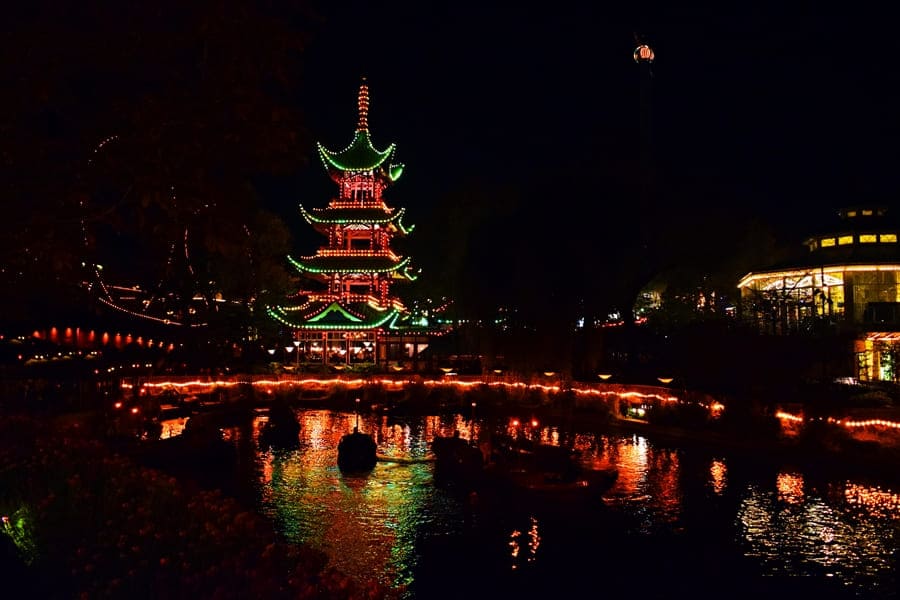
Other pics from the Tivoli Gardens
Third day in Copenhagen
Also the third day in Copenhagen started at 7:30 am. This time, in addition to preparing and having breakfast, we had to put the apartment in order and close the backpacks, because unfortunately the return flight was waiting for us in the evening.
After leaving the comfortable apartment in which we stayed, we headed to the central station. There, we left the backpacks at the baggage storage. Paying around €10, we rented a locker for 24 hours. Free from the packs, we got on the train to Helsingør, where we visited the castle where William Shakespeare set Hamlet.
Back in Copenhagen at around 4 pm, we took a last ride in Strøget to buy some souvenirs and a brief last walk in the Tivoli Gardens (free entry with the Copenhagen Card), before heading to the airport to return to Italy.
Here is a video of the trip:
















2 Comments
[…] visited Kronborg Castle on the third and last day of my trip to Copenhagen. When we arrived in Helsingør after a 45-minute train ride. A drizzle welcomed us. Once out […]
[…] second day of my trip to Copenhagen started with a half-day gateaway outside the city. The destination was Frederiksborg Castle in […]